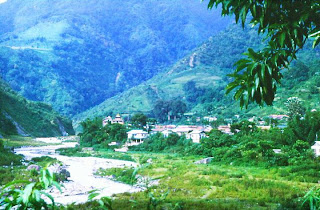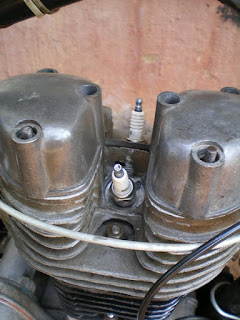IF ONLY
Guns don’t kill people, people kill people!!
Alcohol doesn’t kill; people just die from liver cirrhosis,
Tobacco trees never choked anyone; people just die from lung cancer
& Helmets definitely don’t safe lives as a person dies from old age anyway..
Judging life’s progress by reminiscing the various sweet first times and “would be happy to forget” last ones, there are also the memories of different individuals with whom, whether willingly or otherwise, we spent any length of time. And surprisingly, while the nice, pleasant and good, are thought of only once in a while, it is usually the memory of the unsavoury ones that come cropping up every now and then. For me one such living example of God’s follies was of all things, an editor. I am not taking about Rajan here, but a certain individual who once headed an Auto journal for a short duration before he successfully drove it into the graveyard of dead publications. My association with him stemmed from the fact that I was their motorcycling correspondent-at-large; who because of being unpaid for months at a time, walked out just before their doors closed shut. Among the constant disputes that characterized our relationship, the most memorable one was when this narcissistic individual published a photo of himself on the cover, astride a Japanese crotch-rocket, sans a helmet. This provoked an avalanche of indignant reader’s mail (am still not sure if it was his face or the fact that he was not wearing a helmet), amongst which was also my private email to him voicing my distaste in his lack of helmet sense. He printed almost all of it in the next issue’s readers mail section, including my own mail and the response to all by Mr. Mad Max (as he used to call himself in print) was “It’s my life, and I decide what’s good for me.” The attitude was, if you don’t like my answer, stop reading this mag!! Many did.
A single truth that these vocal pro-choice advocates (irrespective whether it be seat-belts, helmets or babies), somehow never seem to acknowledge, is that one of the best ways of discovering that the world is still full of decent folks is at the site of a traffic accident. While the “its my choice not to wear a helmet” motorcyclist or scooterist lies sprawled across the tarmac in a blissful coma haemorrhaging from ears, their soul on the to play the harp or massaging the Devil’s tail, it is usually a group of total strangers who drop their own schedule and go out their way to deliver their mangled bodies to the hospital, file police FIRs and inform their grief stricken next of kin. A scenario little different from when a suicidee forecloses his or her life leaving behind a sea of confusion, discomforts and pain.
Having ridden across the entire country on a motorcycle, it is in my last few year in Goa, that I have witnessed the largest number of fatal accidents involving two-wheeler riders. Till date totalling six and four happening seconds before I arrived at the scene, involving people of different age groups, riding diverse makes of two-wheelers, at various times of the day and parts of the State. Their only common denominator; None was wearing a helmet!!
Interestingly it is also in this very same State which has already senselessly lost 87 lives this year in two-wheeler accidents, there is this seemingly powerful lobby who call themselves the Motorcycle Action Group, who rally against Helmet laws and make press releases implying” Helmets don’t save lives.”
Well something is seriously amiss here, and while I would refrain from publicly calling them a bunch of idiots (and protect myself from a libel suit, considering their spokesman is a lawyer), I still can’t help taking an abysmal view towards this what seems to be a very Goencho phenomenon.
I shall skip past their prime argument that “Helmets don’t safe lives” as the very statement is too simple to discard and is probably so pregnant with wisdom, that it is straight from the realm of esoteric Buddhist though, a Zen Kaona maybe. Something complimented by “what’s the sound of a skull cracking.” Unless of course there is an Emperor’s new clothes theorem lurking around.
Where is concern’s the allegation about the nexus between helmet manufactures and the powers that be, the entire idea qualifies to be taken only with a barrel of salt. Matter of fact, helmet manufactures of the country still belong to the category of very small or cottage industries and hardly have any clout anywhere to affect government policies. And the down side of this lack of an organized sector is that much of the helmets reaching the shelves of our stores are either spurious or badly lacking in quality, their ISI markings not coming from a certification agency but some back alley screen printer’s workshop.
If asked to pinpoint, why this tiny State sports such high traffic causality figures, I would first hold the bulk of the riders themselves responsible, as Goa in my opinion does have an extraordinarily large number of atrociously bad drivers and riders. Not rash or speedy, but just plain bereft of any traffic sense. It is common to see a motorcyclist take a turn without looking anywhere but straight ahead, often straight into the path on an oncoming vehicle. Likewise it is a common sight to see people riding strictly on the middle of the road even at slow speeds holding up the flow of traffic. A scenario as appalling as it is frustrating that one can’t help wonder, what sort of an authority dishes out the driving licenses here and following what criterion.
The extremely large proliferations of the new generation lightweight economisers coupled with the State’s many winding roads provide another killing combination. Intended solely for carting sedate office goers, these new bikes are designed so much for fuel efficiency that they come with engines badly lacking in torque and tyres so thin, that they hardly accords any grip on the road and the slightest skid gets both the man and machine airborne.
Bus and truck drivers no better then these two-wheeler riders and motorists in terms of driving skills, but at the controls of deadlier vehicles complete the picture by ploughing into each other and smaller machines every now and then.
As much as I dislike associating myself to this so called Action Group and their ludicrous ideas, I tend to agree to their stand that a compulsory helmet law would just add to another never satiated mulching ploy for the highway robbers in uniform. The same with their view on Interceptor cars, or rather the way they are being utilized.
It is by some convoluted law of nature, the members of the police force across the country have an innate ability of converting any law into a cash cow for personnel benefit and acting like self-righteous fascists while at it. Nonetheless a helmet law or no law, when the wolf has decided on dining on the lamb, it doesn’t really matter whether the latter was drinking water upstream or down. About the interceptors and the ludicrous 40 kmph speed limit imposed on the various failing bridges, the less said the better. Defying their very names, none of these mobile toll collectors have ever intercepted anyone on a highway chase, exactly what they are supposed to do, and are content fleecing the unsuspecting tourist vehicles and those unfortunate enough to travel in speeds low enough to apprehend. Those speeding above eighty just skim by un-apprehended, while those at 50 odd have to pay up. Likewise, I wonder how many, if any, of these interceptor drivers are trained police drivers, not the kind that ferry officer’s wives to the market, but experts trained to capture offenders on highway chases??
Another often-occurring thought is why are these guardians of the traffic law never present in the most accident-prone areas of the state?? Having been almost run down by reckless trucks and tippers on the Raibander -Old Goa stretch a number of times, I finally gave up motorcycling on that road and till date am yet to see a police car regulating traffic on that stretch. Fleecing truckers and motorists with various real and drummed up charges on the wide Corlim, Banstarim, Kundaim stretch is easier.
Coming back to the subjects of helmets, I frankly fail to understand the reluctance of the people here to embrace a safety gear which though not guaranteed to save lives, drastically reduces the chance of one’s premature departure by the way of traffic accidents. Anymore than I claim to understand why people get tight-fisted when spending for the protection of their most vital organ, preferring to settle for a Rs 200 shell of dubious origin, instead of going for a quality product at Rs 500-600. After all no hospital stay comes at less then 10 times that amount, no matter how short the stay.
Addressing the most used excuse about the weather here being unfavourable for wearing helmets, my own solution is to wear a not very common design of helmet (which incidentally is made in India for export to the US) it is open faced and does not cover the ears and is still strong enough to be DOT ( U.S Department Of Transportation) certified. Not wanting to be accused by the MAG of being a helmet industries’ stooge, I shall not mention the name of the manufacturer and readers interested can contact me personally by email.
Lastly, an interesting observation from the last few years’ traffic death statistics: despite the large number of women two-wheeler riders in the State, their traffic related mortality rate is almost negligible unless they were sitting pillion. So it is my earnest request to the ladies of the land, no matter what your spouses, sons and siblings tell you about the unsuitable weather conditions, their motorcycling prowess or endlessly quote the ill-informed doctrines of the MAG, remember that HELMETS SAVE LIVES!! And do so everyday all over the world.
NAG, COAX and BLACKMAIL them in submission and make sure that the men in your lives never leave home without one and wear them while riding as well. The same applies to you ladies too.
After all no one deserves to become either a widow, a grieving mother and sister, husband, son or brother and none of the MAG’s loud proclamations are going to ease your pain or bring back to life if (heavens forbid) the inevitable happens and the only words which would make sense, would be IF ONLY….IF ONLY HE WORE A HELMET….



















